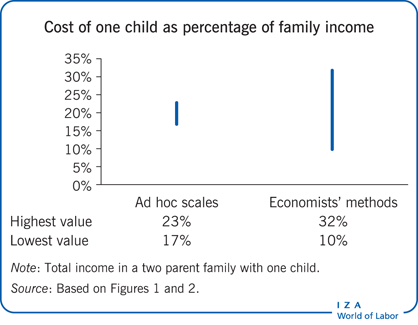Elevator pitch
The cost of children is a critical parameter used in determining many economic policies. For instance, correctly setting the tax deduction for families with children requires assessing the true household cost of children. Evaluating child poverty at the individual level requires making a clear distinction between the share of family resources received by children and that received by parents. The standard ad hoc measures (equivalence scales) used in official publications to measure the cost of children are arbitrary and are not informed by any economic theory. However, economists have developed methods that are grounded in economic theory and can replace ad hoc measures.

Key findings
Pros
The ad hoc equivalence scales used in official publications have no basis in economic theory, are unadjusted for child or family characteristics, and imply a cost of children that is always proportionate to family income.
Scales that are more solidly based in economic theory, such as Engel and Rothbarth, are easy to estimate from survey data and can replace ad hoc scales.
Modern approaches based on economic analysis more precisely identify what parents spend for children and take account of economies of scale.
Modern approaches are consistent with the possible conflicting interests of parents.
Cons
Official publications use simple, standard ad hoc equivalence scales to take into account the cost of children.
Engel scales are based on some arbitrary assumption and may overestimate the cost of children.
Rothbarth scales are inconsistent with the possibility of economies due to family scale.
Engel and Rothbarth scales assume comparablele welfare levels for different families, which is not testable, and introduce arbitrariness to the measurement of the cost of children.
Modern approaches necessitate more sophisticated estimation methods.